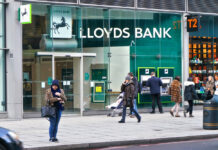UK inflation in October held steady at 2.4%, below analyst expectations of 2.5%.
The Office for National Statistics (ONS) noted declines in food and clothing prices, however these were partially offset by petrol, diesel and gas prices.
ONS head of inflation Michael Hardie said: “Prices paid by consumers continued to rise at a steady rate with falls in food and clothing offset by rising utility bills and petrol, as crude prices continued to rise.”
Last month, inflation levels fell to 2.4%, dropping from the 2.7% recorded for August.
The fall was attributed to lower prices of food and non-alcoholic drinks. Back in 2017, UK inflation reached a six-year high of 3.1%.
Earlier in November, the Bank of England opted to hold interest rates at 0.75%, in light of continued uncertainty regarding Brexit negotiations.
Nevertheless, officials from the Bank recently stated that they believe that a deal will be the most likely outcome.
“I still think it’s the most likely outcome, but obviously over time, every day there are headlines – positive, negative – which will send the currency in particular one direction or the other,” deputy governor Ben Broadbent said in comments to CNBC.
“But for our part we have to make a particular assumption on which to condition our forecasts, that seems to me still to be the most likely outcome and that’s the one we choose.”
The latest inflation figures come amid news that UK and EU negotiations have agreed upon a Brexit deal.
The cabinet are set to meet later this morning to approve the draft agreement.




